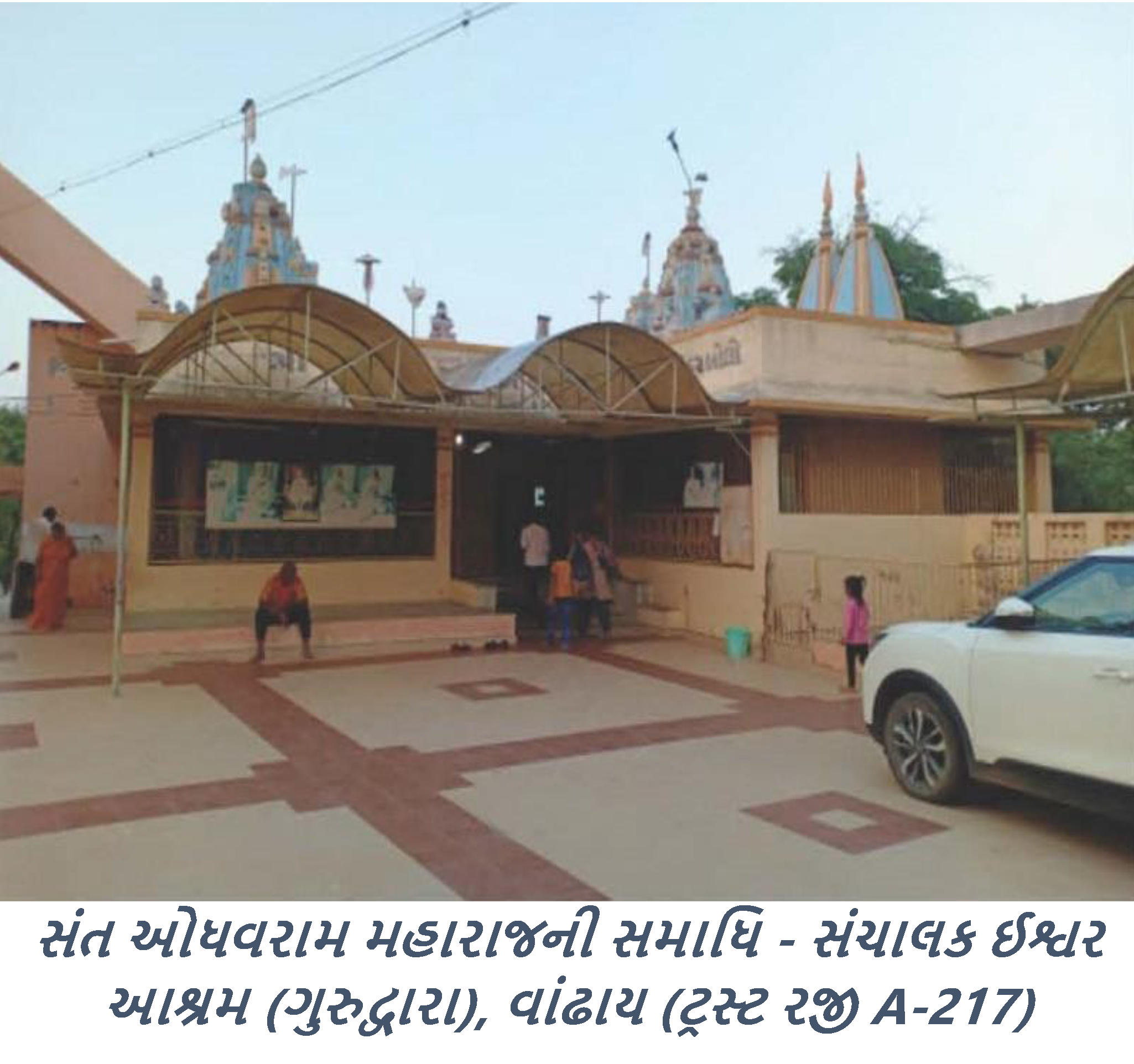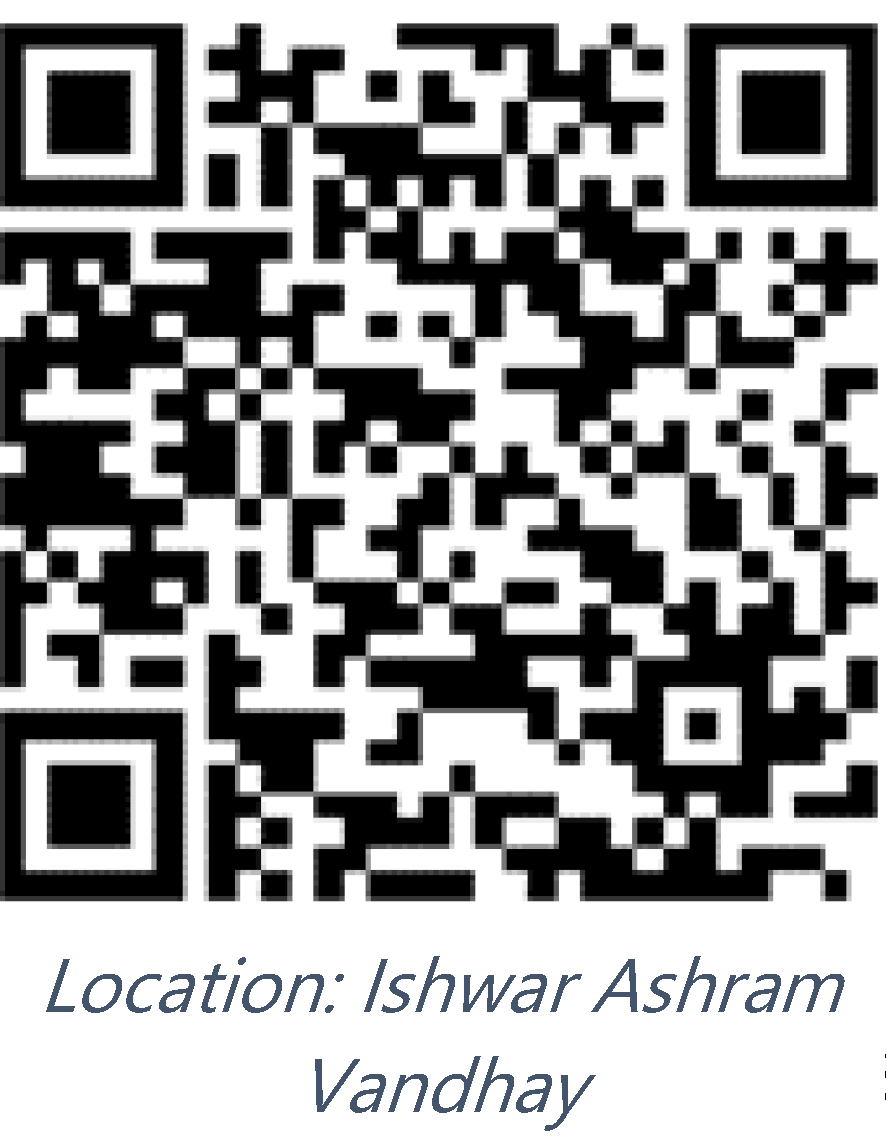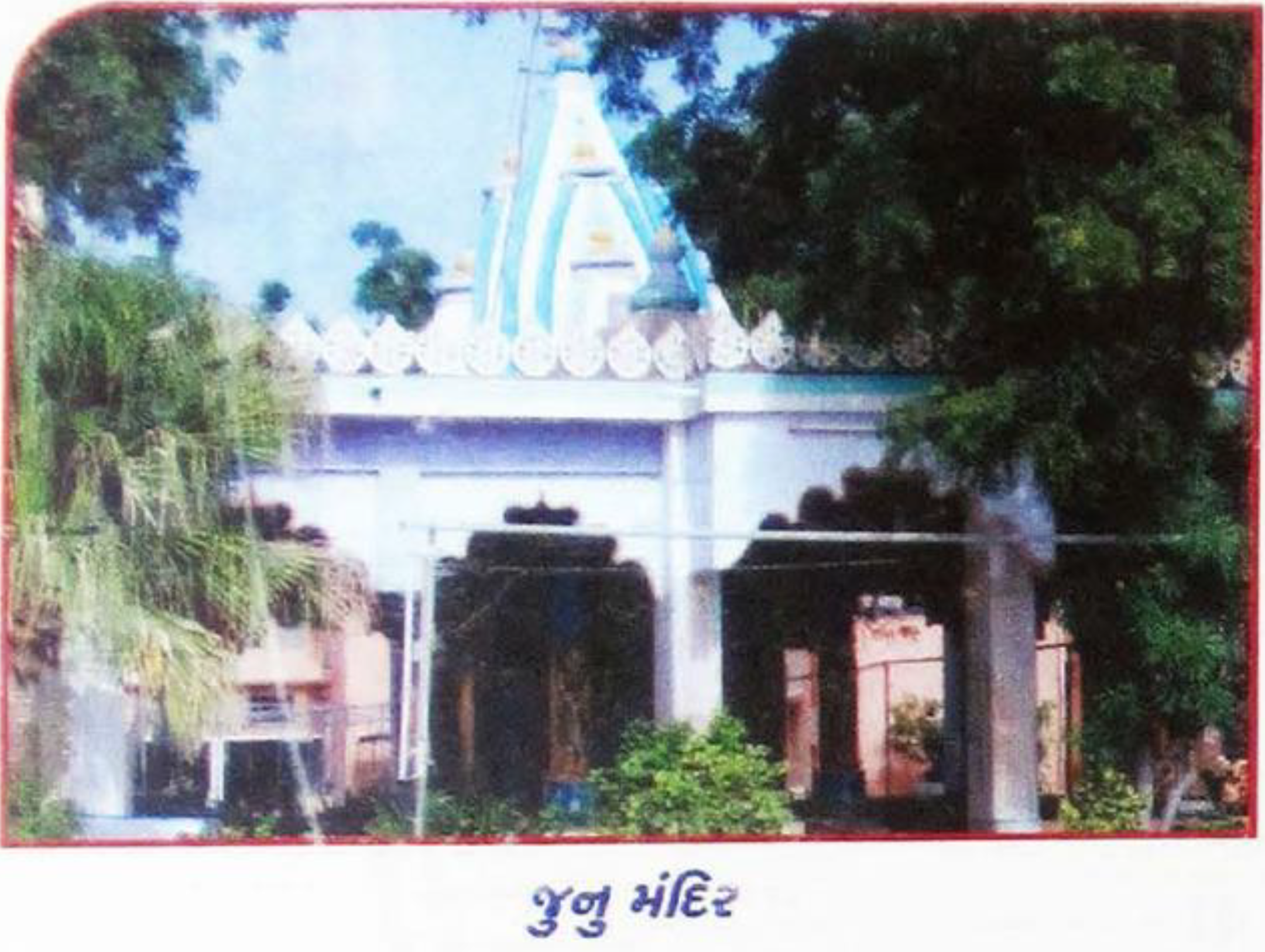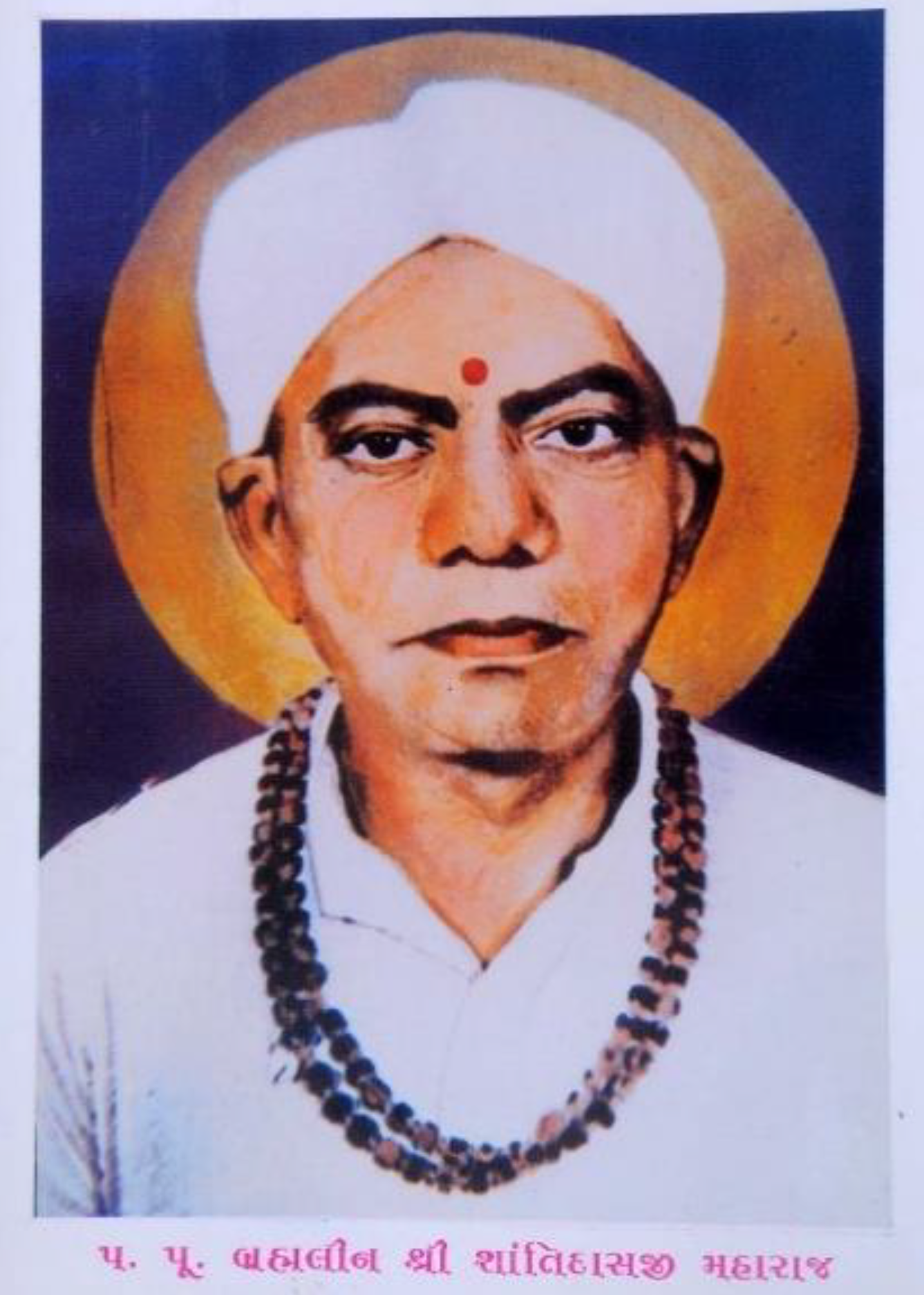
Akhil Bhartiya Kutch Kadva Patidar Samaj
A central organisation of Kutch Kadva Patidar Sanatan community

Akhil Bhartiya Kutch Kadva Patidar Samaj
A central organisation of Kutch Kadva Patidar Sanatan community
Translation Status: In Progress – To Review
CA Patel Chandrakant Kantilal Chhabhaiya
– Mumbai

 The Kutch Kadwa Patidar community has a significant history that cannot be told without mentioning Vandhay. Ishwar Ashram, Vandhay has been instrumental in helping this community, and their debt towards Ishwar Ashram cannot be repaid, even if they tried. In the year Vikrama Samvat 1755 (AD 1698), Sant Vihari Maharaj visited Vandhaya from Hamla and initiated the Harihara tradition, which was continued by other saints. To learn more about it, one should refer to the book “Ishwar Vihari Vilas”. It is believed that it was the divine yoga and the good deeds of the community’s past lives that led them to discover this Gurdwara, also known as “Ishwar Ashram”.
The Kutch Kadwa Patidar community has a significant history that cannot be told without mentioning Vandhay. Ishwar Ashram, Vandhay has been instrumental in helping this community, and their debt towards Ishwar Ashram cannot be repaid, even if they tried. In the year Vikrama Samvat 1755 (AD 1698), Sant Vihari Maharaj visited Vandhaya from Hamla and initiated the Harihara tradition, which was continued by other saints. To learn more about it, one should refer to the book “Ishwar Vihari Vilas”. It is believed that it was the divine yoga and the good deeds of the community’s past lives that led them to discover this Gurdwara, also known as “Ishwar Ashram”.
 Our conversation today begins with Sant Lalramji Maharaj. Being from the Patidar community himself, he was deeply saddened by the fact that the Patidar community in Kutch had deviated from Sanatan Dharma and adopted the Satpanth religion, which is considered a branch of Islam. Unfortunately, due to his short tenure, he was unable to make any significant progress in addressing this issue directly. Towards the end of his life, Saint Lal Ramji Maharaj promised his guru, his fatherly figure, Odhavaram Maharaj, to complete the unfinished work. Despite not having had much opportunity to work for the community, the words that came out of his mouth contained the speech of God. For more information on Sant Lalramji Maharaj, please refer to page 141 in the book “History of Kadwa Patidars of Kutch” which was published by the Shri Akhil Bharatiya Kutch Kadwa Patidar Samaj.
Our conversation today begins with Sant Lalramji Maharaj. Being from the Patidar community himself, he was deeply saddened by the fact that the Patidar community in Kutch had deviated from Sanatan Dharma and adopted the Satpanth religion, which is considered a branch of Islam. Unfortunately, due to his short tenure, he was unable to make any significant progress in addressing this issue directly. Towards the end of his life, Saint Lal Ramji Maharaj promised his guru, his fatherly figure, Odhavaram Maharaj, to complete the unfinished work. Despite not having had much opportunity to work for the community, the words that came out of his mouth contained the speech of God. For more information on Sant Lalramji Maharaj, please refer to page 141 in the book “History of Kadwa Patidars of Kutch” which was published by the Shri Akhil Bharatiya Kutch Kadwa Patidar Samaj.
Sant Odhavram Maharaj dedicated his entire life to fulfilling the promise made to his Guru. Despite Sant Odhavram Maharaj had disciples from various communityies, including many from the Bhanushali community of Purvashram. He always emphasized that K. K. P.’s community should not be given preferential treatment and that all disciples should be treated equally. It is possible that some of his other disciples may have been overlooked in favor of K. K. P.’s community. Special concessions were made in the rules and regulations for the boys studying at Vandhay Pathashala or Hostel. Although there was a rule that only single boys could study there, it did not apply to community boys, thanks to the efforts of K.K.P. Even married boys could stay and study there for the salvation of their community. Sant Odhavaram Maharaj did not discriminate and worked tirelessly for the betterment of the community. Every person of the community owes a debt of gratitude to the late Sant Odhavaram Maharaj for his service.
Point (150.4) in this book tells the story of how Sant Odhavram Maharaj liberated a community from Satpanth and successfully brought them back to the original Sanatan Dharma. One of the unique features of this story is the fact that the community converted to Sanatan Dharma by choosing Lord Lakshminarayana as their Ishtadev. But why did they choose Lord Lakshminarayana? An article about Sant Odhavaram Maharaj’s foresight in putting the interests of the community above his own has been published in a book. By reading it, one can gain a better understanding of his vision. For a brief account of his life, a good article can be found on page 142 of “History of the Bitter Patidars of Kutch”. For more detailed information, the book “Sant Odhavdas” is recommended.
Sant Odhavaram Maharaj gifted Kutchi Lalrameshwar Ashram in Haridwar and a room in Badrinath to the community. See point (152.3) in this book for more details.
Sant Odhavaram Maharaj and his disciple, Sant Dayalram Maharaj, dedicated their lives to serving their community. Sant Dayalram Maharaj spread the teachings of Sanatan Dharma in Gamegam, Kutch and Kampekampa, Gujarat. He worked hand in hand with elder Ratanshi Khimji and their team, taking gradual steps towards the reformation of their community.
In the Nov-2021 issue of Patidar Sandesh, Patidar Saurabh, and Sanatan Dharma Patrika, an article titled “Untold History by Vandhay” was published. It was written by CA Patel Chandrakant Kantilal Chabhaiya. Additionally, “Umiya Mataji Vandhay – Untold History Part – 2” was published in the Dec-2021 issue of Sanatan Dharma Patrika and in the Jan-2022 issue of Patidar Sandesh and Patidar Saurabh. Here are some key points from these two articles.
 In order to spread Sanatan Dharma amongst the entire K.K.P. community, the Sanat movement held meetings on a large scale in the villages of Kutch and Gujarat. On the auspicious day of 02-Apr-1944, under the guidance of Sant Odhavaram Maharaj, the leaders of Sri Kutch Kadwa Patidar Sanat Sanat Sanat aimed to embody the supernatural inspiration of Sri Haribhai Karamashibhai Manmandir of Mottisari Kampana during such awakening. The Sri Kutch Kadwa Patidar Sanatni Samaj, Head Office Nakhtrana has published an original report about this event which can be found on On page 436 of the book “Abhilekh 2023”, there is a reference to a time
In order to spread Sanatan Dharma amongst the entire K.K.P. community, the Sanat movement held meetings on a large scale in the villages of Kutch and Gujarat. On the auspicious day of 02-Apr-1944, under the guidance of Sant Odhavaram Maharaj, the leaders of Sri Kutch Kadwa Patidar Sanat Sanat Sanat aimed to embody the supernatural inspiration of Sri Haribhai Karamashibhai Manmandir of Mottisari Kampana during such awakening. The Sri Kutch Kadwa Patidar Sanatni Samaj, Head Office Nakhtrana has published an original report about this event which can be found on On page 436 of the book “Abhilekh 2023”, there is a reference to a time
Before Mataji’s temple was established. Sant Odhavaram Maharaj wrote a guide called “Kadwa Patidar Gyanti Ni Uttpatti (Origins of Kadwa Patidars)” and “Kadwa Patidar Bhaiyone Palwa Yogya Niyamo (Rules Kadwa Patidars should follow)” to help the Kutch Kadwa Patidar community abandon religious decadence. These books provided instructions on what rules they should follow after leaving the Pirana Satpanth religion. The second edition of the book “Iswar Vihari Vilas – Part 1 & 2” published in 1943, includes certain chapters, such as “Kadwa Patidar Bhaiyoe Karva Yogaya Dainikriya (A salient guide to daily rituals)“, which can be found on pages 351 to 364.
The temple was established in 1944 as a small dera, without a permanent priest or employee. It was built inside Thakar Dwara/Uddhav Ashram during the time of Sant Odhavaram Maharaj, followed by his successor, Sant Dayaldasji Maharaj. We must acknowledge the debt we owe to the tireless efforts of Sant Dayaldasji in creating awareness about the temple. In the history of community, Sant Dayaldasji is an unsung hero of a historical Sanat, whose contribution is not being recognized as much as it should. The Gurudwara of Vandhay, meaning “God Ashram (Gurudwara) Vandhay (Trust Reg A-217 Kutch)” was originally administered by the saint tradition of Vandhay within the Samadhi Sthanaka of Saints.
The Umia Mataji temple was built inside the sanctum sanctorum of Sant Odhavaram Maharaj in Bandhay. The gate was later separated by Ishwar Ramji and renamed as “Uddhav Ashram/Thacker Gurudwara”. The ashram was located in the Tapobhumi of Sant Ishwar Ramji. The old temple of Umiya Mataji was built directly above the cave or cellar where Sant Vihari Sahib did penance. The original temple was constructed in a spiritual and sacred place. However, in 2009, a Havan Kash was built on the site of the old temple and was relocated to the open space in front of the temple. More information about this is available in the Smriti Granth.
 Dated 02-Apr-1944, an image of Panmurti was consecrated before Mataji, and three years later, a full-fledged idol of Mataji was installed. The entire place was owned by Thacker, and Thacker Dwaro was operating there, with some sadhu saints residing on the premises. The town of Ishwar Ashram Gurudwara was once home to two prominent figures, Sant Odhavaram and Sant Dayalramji. The Samadhi of Ishwar Ramji was located where the Gurudwara now stands. It was here that Saint Odhavramji Maharaj established the Gurukul on Vasant Panchami (15-Feb-1937) of Vikram Samvat 1993. The K. K. P. community, which was historically disadvantaged and impoverished, was given special concessions to attend this Gurukul due to their lack of education. Other communities were not given these same advantages. This was the only notable exception.
Dated 02-Apr-1944, an image of Panmurti was consecrated before Mataji, and three years later, a full-fledged idol of Mataji was installed. The entire place was owned by Thacker, and Thacker Dwaro was operating there, with some sadhu saints residing on the premises. The town of Ishwar Ashram Gurudwara was once home to two prominent figures, Sant Odhavaram and Sant Dayalramji. The Samadhi of Ishwar Ramji was located where the Gurudwara now stands. It was here that Saint Odhavramji Maharaj established the Gurukul on Vasant Panchami (15-Feb-1937) of Vikram Samvat 1993. The K. K. P. community, which was historically disadvantaged and impoverished, was given special concessions to attend this Gurukul due to their lack of education. Other communities were not given these same advantages. This was the only notable exception.
The Gurudwara of Vandhay mentioned earlier, served Mataji’s shrine for the first 20 years. As part of this arrangement, a Sadhu was sent every morning and evening from the Gurudwara to provide regular service. The temple of Mataji offered various services such as Diwa-batti, puja archana, and others. Although there was a growing awareness of Mataji in the community, the K. K. P. community was still struggling to break free from religious degradation. During that period, very few people visited the temple due to a lack of awareness, resulting in minimal income. Fortunately, Ishwar Ashram came to the rescue during these difficult times, and for that, the community owes a debt of gratitude to the Ishwar Ashram (Gurudwara).
Sant Odhavaram Maharaj aimed to establish religious organization and independence for the Kutch Kadwa Patidar community by bringing them together in one place. To achieve this, he presented a proposal during the Central Samaj meeting on 5th July 1947 to hand over the Bandhay temple exclusively to the “Kutch Kadwa Patidar Sanatani Samaj”. Additional information on this can be found in point (150.26) of the referenced book.
In the final days of Odhavaram Maharaj’s life, he desired to reside close to the Samadhi of Ishwar Ramji Maharaj. Therefore, a house was constructed for Maharaj Shri to stay near the Samadhi. This house still exists today, and visitors can see Odhavaram Maharaj’s drum on the first floor of the same building, which serves as a reminder of his presence.
 Later when Sant Dayalramji Maharaj was made Gadipati, he developed the present Ishwar Ashram. After Odhavram Maharaj’s samadhi, Sant Dayalramji Maharaj developed the present Ishwar Ashram and gradually arranged its administrative affairs.
Later when Sant Dayalramji Maharaj was made Gadipati, he developed the present Ishwar Ashram. After Odhavram Maharaj’s samadhi, Sant Dayalramji Maharaj developed the present Ishwar Ashram and gradually arranged its administrative affairs.
When Sant Shanti Ramji Maharaj ascended to the throne, he specially developed the Ishwar Ashram. He was originally from the Kutch Kadwa Patidar community and belonged to the Chabhaiya family of Nani Aral village. While Ishwar was working on the development of the ashram, on 14-May-1964, Shanti Ramji Maharaj called the ashram leaders of the central society and Sanatani K. K. Pa. During the meeting, the community leaders independently offered the entire ashram to a committee of six brothers. It was a generous donation without any financial expectation. Simply put, the ashram was offered/donated in its entirety.
Names of Committee Members | |||
1 | Patel Dayabhai Harilal | – | Motisari Kampa – Native Village Mathal |
2 | Patel Parbat Lakhubhai Pokar | – | Mathal (Former President of Kendriya Samaj) |
3 | Patel Khimji Nagji Limbani | – | Mathal (Former President of Kendriya Samaj) |
4 | Patel Karsan Ukeda | – | Deshalpar |
5 | Patel Kanji Gopal | – | Deshalpar |
6 | Patel Ravji Velani | – | Ludwa |
Even though this Ashram was offered to the Sanatani K. K. P. community, for a year a monk was regularly sent from Ishwar Ashram to serve Mataji every day.
It was Sant Odhavaram Maharaj’s strong inner desire that made people of all 18 varnas come to the Harihara tradition that he belongs to. On the other hand, Sant Shanti Ramji Maharaj’s uplifting spirit was such that he welcomed all people regardless of their community. However, it’s worth noting that the bitter Patidars have Umiya Mataji as their clan goddess. The purpose of establishing the temple by Odhavram Bapa was to unite the Patidar community brothers who left the Satpanth religion. To achieve this goal, it was necessary for the administration of Mataji’s temple to be managed by Sanatani K. Pa. society members. Bapa generously donated his own Thakar door to the supervision of the central society leaders of today’s Sanat without accepting any compensation.
In 1973, the system underwent its third change. A new committee was established with the guidance of Sant Valdasji. Their aim was to revive the temple of Mataji, improve the facilities for visitors, and make necessary arrangements.
The prominent brothers of Kutch Kadwa Patidar Samaj, based in Mumbai, took notice of this matter. Pujya Valdasji Maharaj agreed to stay in Bandhay for two months a year to increase the enthusiasm of the workers. Mr. Samji Jivraj Limbani, a native of village Kotda (j) and a resident of Thana, used to stay in Vandha for six months in a year. Other elders like Mr. Dhanji Poonja also participated in this work. The elders took up various responsibilities to support the cause.
Manilal Walji (Patel & Co., Mumbai)
Sri Shivagana Raja
Mr. Karsan Mulji
Shri Premji Punja (Former President of Kendriya Samaj and Founder Secretary)
Around 80 people became life members by contributing Rs. 1,001/-. Notably, Mr. Manji Walji Sankhla, the elder of the native village Ukheda, promised to contribute Rs. 10,000/-. Further details can be found on Page 11 of the March 1973 edition of Awareness Monthly Patra.
In 1977, the administrative system of the temple underwent another change. During that year, a new trust named “Shri Umadevi and Ishwar Ramji Annakshetra and Charitable Trust” was formed under the guidance of Sant Shri Valdasji Maharaj. The previous president, Shri Premji Ramji Kalyanparwala, was replaced by a new trust. Even in this new trust, veteran leaders of the central society served important roles as trustees, ministers, and executive members. A list of officers for this trust was published in the 2010 Smritigranth on page 108 and includes the subsequent history of the system.
Regarding the debt, what course of action should we take? The Satpanth religion is currently facing a campaign led by its opponents. As a result, its followers now identify themselves as Sanatan-Satpanthi instead of just Satpanthi. The monks of the religion also promote this new identity. It appears that this shift is influenced by Vandhay, and the religion owes a debt to him.
The K.K.P. community owes a great debt to Vandhaya which cannot easily be repaid.
|| Harihar||
|| Jai Lakshminarayan || || Jai Umiya Ma || || Jai Sanatan ||